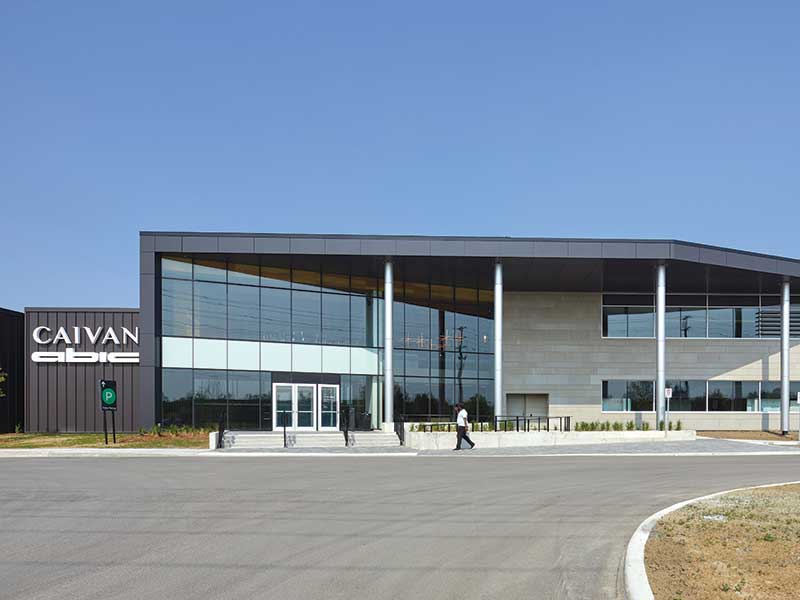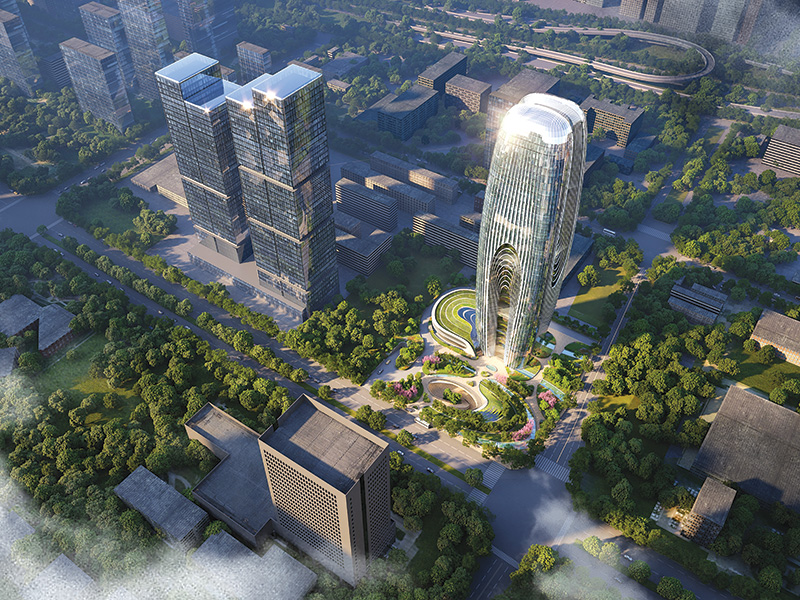The Case for Façade Lighting
Developers and investors, as also city governance bodies, have demonstrated a 'newly-found 'interest in façade lighting – new, being relative. Memorials and monuments and touristy landmarks have always received illumination as a mark of their iconic stature. But now, all types of buildings receive some sort of façade lighting – from the discreetly lit to the flood lit.
A major reason for this, for the private developer is a call for attention or 'ego' lighting. As social engagements continue through into the night and cities are becoming 24-hour creatures, establishing a night time identity for the built structure has become an important consideration. And while it serves no other functional purposes, it does serve as an extremely useful marketing factor.
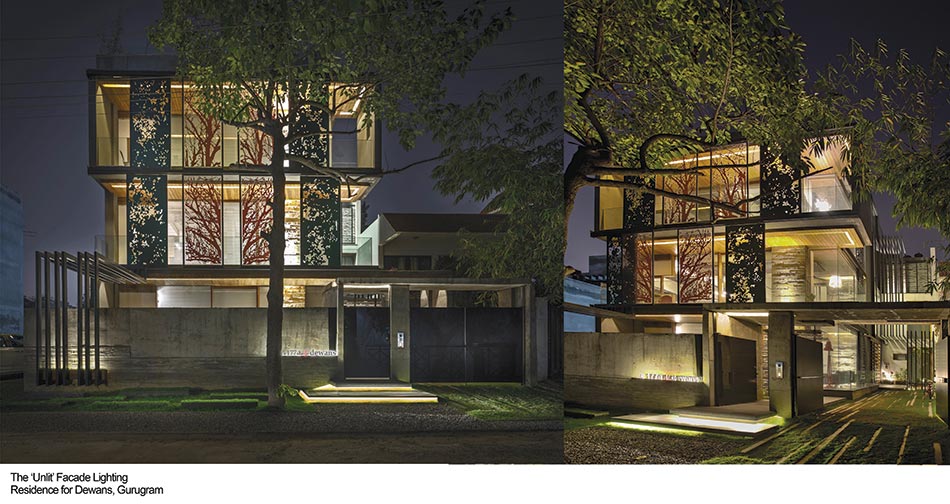
In the urban context, there is great value: both economic and humane. While we are big advocates of preserving the dark sky, and the night time environment, vertical illuminated surfaces are perceived as brighter than traditional horizontal illumination, assuming identical luminance, and, therefore, more efficient and 'green'. All lighting implies increased energy demand. But as long as the light is properly directed and stray light is controlled, the best possible efficiency can be achieved, and unnecessary waste of light, light pollution and light trespass may be avoided. They contribute greatly towards overall well-being, orientation and perceived safety. That is the major advantage and benefit of 'prestige' lighting.
Façade Lighting Techniques
Façade lighting is not simply shining light on a building. In fact, it is not at all that! It is the reconciliation of creative intent with sustainable objectives. There can be but two approaches to façade lighting:
Façade lighting is not simply shining light on a building; in fact, it is not at all that! It is the reconciliation of creative intent with sustainable objectives
Harmeet Singh Issar, Design Matrix
Light for Façade
Light that brings attention to architectural details
Light that sits on the skin of the building
Light with minimal form, size and geometry that also looks good in day on façade
Light with colour that complements the façade
Light that politely & indirectly becomes the night identity
Façade for Light
Light that calls attention to itself
Light that becomes the skin of the building
Light that completely disappears in day time
Light that transforms form and colour of the architecture
Light that vibrantly and directly becomes the identity
Based on the above approaches, there are three broad techniques towards façade lighting design. In each of these techniques, context prevails and determines (or ought to determine) the technique to be applied. Some types of architecture are also more suited to either of the techniques. For instance, if you try to project content onto a clear curtain wall glazed façade, you are not going to get anything!
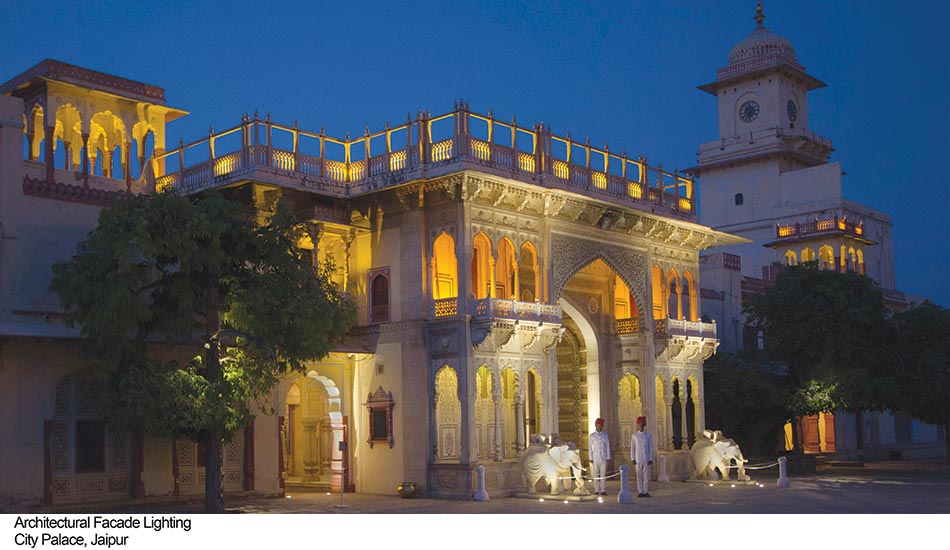
Architectural Façade Lighting
Light is applied to enhance the structural and architectural details – light is there for the façade, as per the facade. A successful lighting design, is, however, dependent as much on the architectural team as on the lighting designer, and an effective collaboration will ensure that light sources are integrated within the architecture, so that the effect is showcased rather than the fixture.
The lighting design for the City Palace, Jaipur, is a classic example of this technique. Commissioned by the Maharaja Sawai Mansingh II Trust, the intent of doing the façade lighting was to open up the Palace complex to night tourism. The rich architecture required nothing more than putting the right light at the right place – meaning, a light of suitable form factor with precise optics as desired and required, positioned so as to emphasize the architectural detail in question, avoiding glare. Due to the extremely sensitive nature of the building, it was not possible to integrate or conceal a lot of the fixtures. Hence, the fixtures were selected to be extremely efficient design in extremely compact housings.
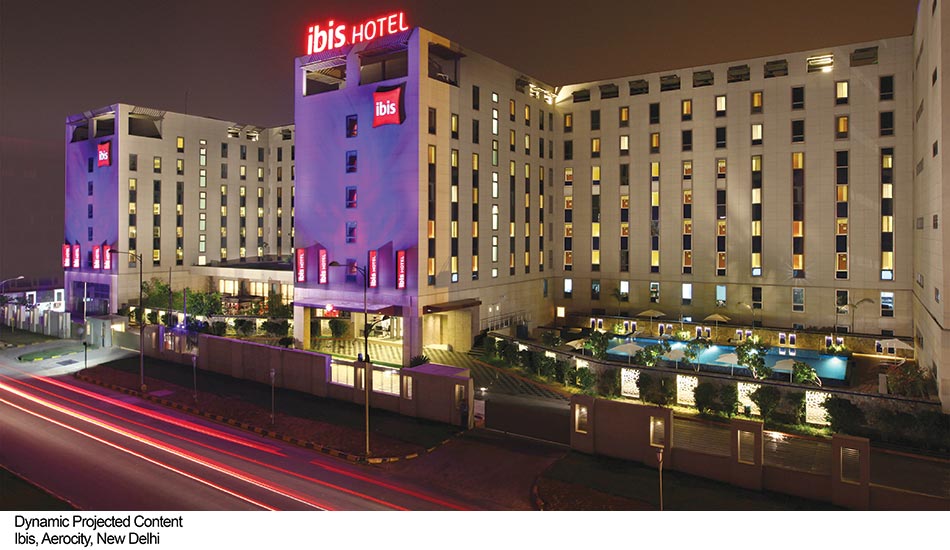
The façade lighting for the Sunshine Towers, Mumbai – the tallest steel structure in the country by the legendary architect Raja Aederi, was designed after the building was complete, and strives to underline the structure by night. As it stands tall above the surrounding development, establishing a night time identity was an important criterion.
Pixelated Façade Lighting
An example of the second approach of façade lighting: pixelated façades have been made better with the advent of solid-state lighting. They use the architecture as a blank canvas to paint an entirely different night time picture / message / identity. These facades offer greater opportunities for engagement of the public as they are often interactive or can be easily made interactive.
The design for Parsvnath Towers in New Delhi, was based on its landmark location. The upper floors' façade featured a dense network of LEDs programmable to display any content – graphic / text but intended to, in fact, exhibit a stylized version of Lutyens plan for Central Delhi, although budgets did not allow for implementation of the design
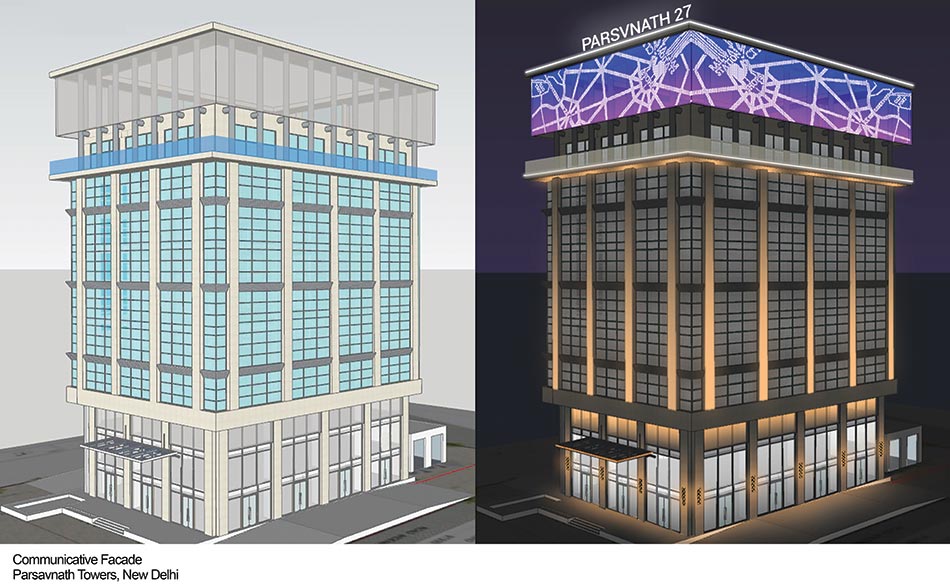
Projected Façade Lighting
Taking media content from conference rooms to building facades, the technology and the basic design is the same – just the fixtures are much larger, the wattages much higher and the distances much more. While projected façade lighting too is dynamic, its huge advantage lies in the fact that it can easily be done later or changed later. However, due to the nature and cost of equipment, they are more popular as temporary or event-based applications.
The Ibis Hotel, Aerocity, New Delhi, features LED gobo projectors that cast colored shadows on the fascia of an otherwise neutral canvas. It may not be a true representation to say that LEDs brought down the energy consumed by projectors as compared to their metal halide counterparts, rather, LEDS helped extend this technology more to the realm of architectural lighting
'Designed' façade lighting may not necessarily imply application of additional light fixtures. Sometimes borrowed light can contribute effectively towards a night time image. The Lalit hotel at Mangar and the residence for Dewans, with Hive Studios, Gurugram, is memorable for this reason. The captivating night time shot has, in fact, zero façade lighting. Interior lighting contributes towards the lighting of the façade filtering through the jail panels and makes for an arresting night time image – the ultimate in 'green' façade lighting.


